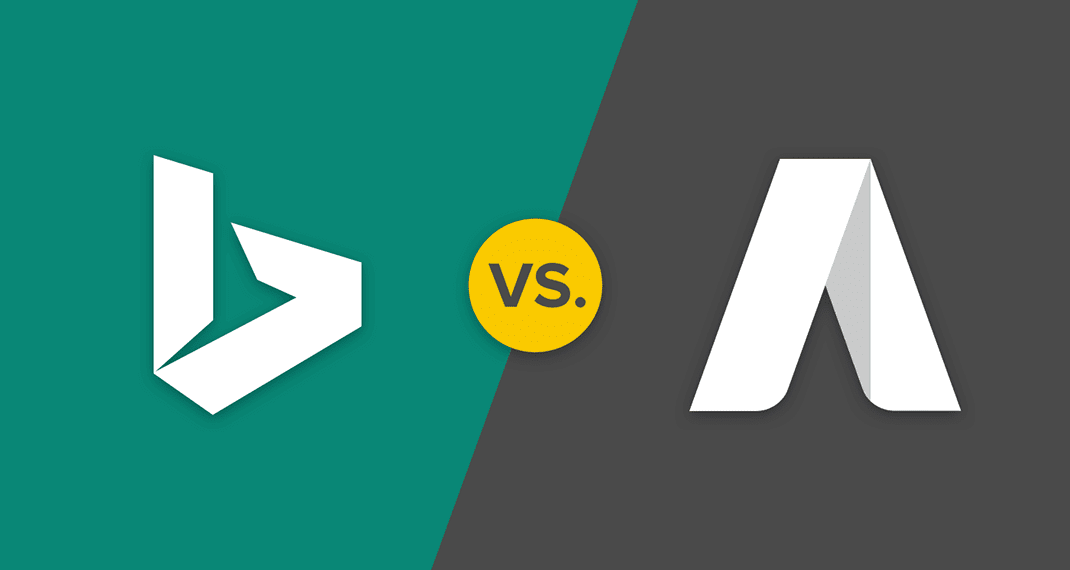
In the landscape of online advertising, businesses constantly seek the most effective platforms to reach their target audience. Two major players in this arena have long been Google Ads vs Bing Ads. As we step into 2024, the debate about which platform reigns supreme continues to spark interest among marketers and business owners alike.
In this blog, we delve into the comparative strengths of Google Ads and Bing Ads, examining their features, audience reach, performance metrics, and ultimately, which platform might better serve your business objectives in the current digital climate.
Whether you’re a seasoned advertiser or just dipping your toes into online marketing, understanding the nuances between these platforms is essential for making informed decisions about where to invest your advertising budget.
Let’s navigate the Google vs. Bing Ads landscape together to discover which platform could be the game-changer for your business in 2024.
Table of Contents
What Are The Major Differences Between Google Ads And Bing Ads?
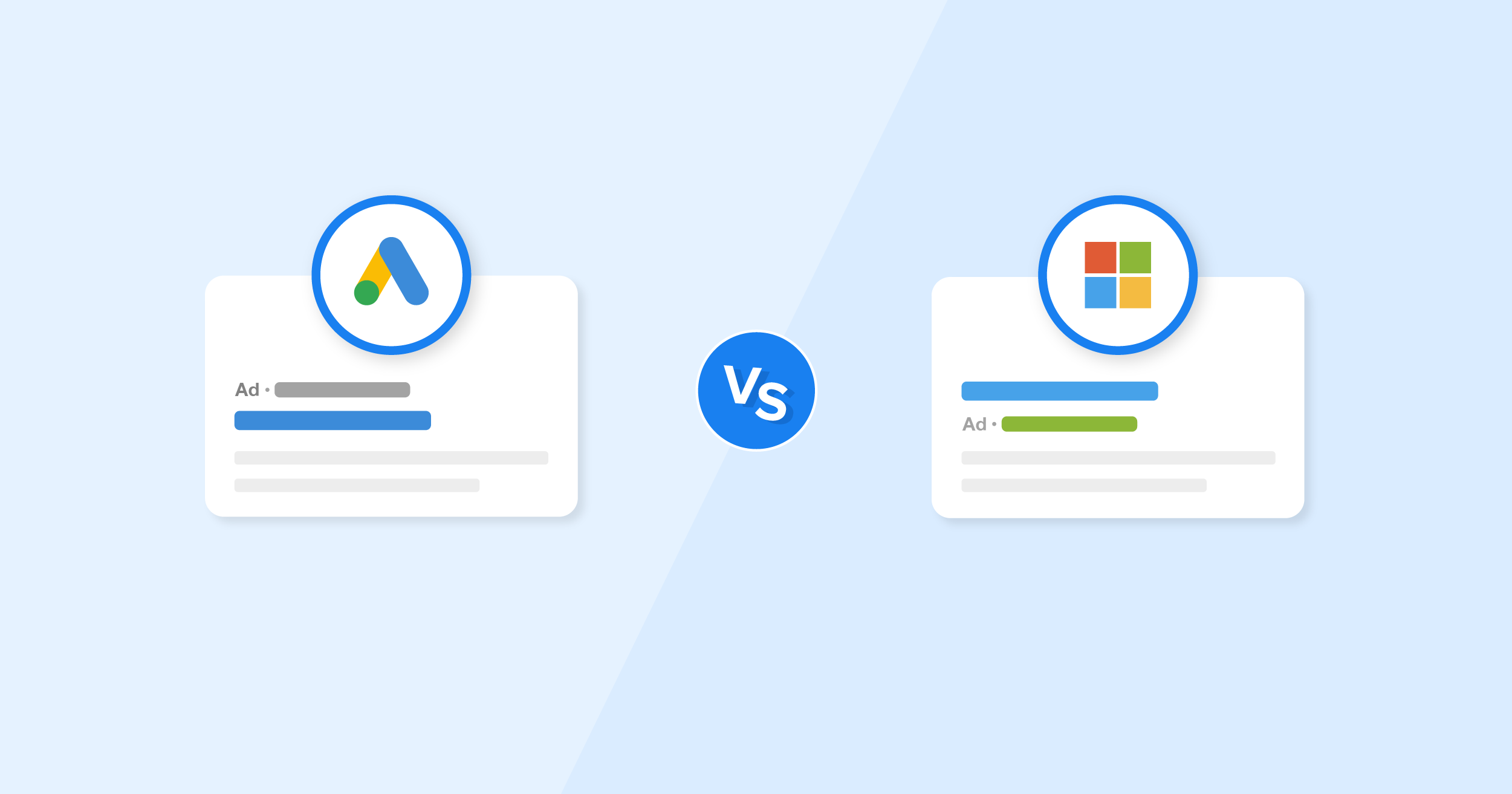
Google Ads and Bing Ads are both powerful advertising platforms, but they differ in several key aspects that may influence where you choose to allocate your advertising budget. Here are some of the major differences between the two:
Audience Reach
Google Ads
Google processes over 3.5 billion searches per day, making it the undisputed leader in search engine market share. With such a vast audience, Google Ads offers unparalleled reach and exposure.
Bing Ads
While Bing has a smaller market share compared to Google, it still commands a significant portion of the search engine market, particularly in certain demographics and regions. Bing Ads can be particularly attractive for businesses targeting older demographics or specific niche markets.
Cost Per Click (CPC)
Google Ads
Generally, CPC on Google tends to be higher compared to Bing Ads due to the fierce competition for keywords and placements. However, the potential return on investment (ROI) can also be higher given the larger audience size and higher click-through rates.
Bing Ads
CPC on Bing Ads is often lower than on Google, making it an attractive option for businesses with limited advertising budgets. Lower CPC can also lead to a more cost-effective advertising campaign, especially in industries with less competition.
Ad Formats and Extensions
Google Ads
Google offers a wide range of ad formats, including text ads, display ads, video ads, shopping ads, and more. Additionally, Google provides various ad extensions such as sitelinks, callouts, and structured snippets to enhance the visibility and effectiveness of your ads.
Bing Ads
Bing also supports various ad formats, including text ads, shopping ads, and app install ads. However, the selection may not be as extensive as Google’s. Bing also offers ad extensions like call extensions and location extensions to improve ad performance.
Demographic Targeting
Google Ads
Google provides robust demographic targeting options based on factors such as age, gender, location, device, and even interests. This level of granularity allows advertisers to tailor their campaigns to specific audience segments effectively.
Bing Ads
While Bing Ads also offers demographic targeting options, the granularity may not be as refined as Google’s. However, Bing does provide targeting options based on factors such as age, gender, and location, allowing advertisers to reach relevant audiences.
Search Partner Network
Google Ads
Google’s Search Partner Network extends the reach of your ads beyond Google’s search results to include other search engines and websites that partner with Google. This can increase the exposure of your ads but may also result in lower conversion rates compared to ads displayed on Google’s own search results.
Bing Ads
Bing’s search partner network operates similarly to Google’s, extending the reach of your ads to partner sites and search engines. While Bing’s network may not be as extensive as Google’s, it still provides additional opportunities for exposure.
Understanding these differences can help you make informed decisions about where to allocate your advertising budget based on your business goals, target audience, and advertising objectives. Whether you choose Google Ads, Bing Ads, or a combination of both depends on various factors such as your budget, audience demographics, and the nature of your products or services.
What Are The Types Of Google Ads?

Google Ads offers a variety of ad types to suit different marketing objectives and target audiences. Here are some of the main types of Google Ads
Search Ads
Text-based ads that appear at the top or bottom of Google search results when users search for keywords related to your business. They typically include a headline, display URL, and description, and are triggered by specific search queries.
Display Ads
Image-based ads that appear on websites within Google’s Display Network, which includes millions of websites, blogs, and apps. Display ads can be static or animated and can be targeted based on demographics, interests, or specific websites.
Video Ads
Video ads that appear on YouTube and across Google’s Display Network. They can be in-stream ads that play before, during, or after YouTube videos, or they can be video discovery ads that appear alongside YouTube search results or on the YouTube homepage.
Shopping Ads
Product-based ads that appear at the top of Google search results when users search for specific products. Shopping ads feature product images, prices, and store names, making them highly visual and actionable for users looking to make a purchase.
App Ads
Ads that promote mobile apps across Google’s network, including search, display, YouTube, and within other apps. App ads can drive app installs or encourage users to take specific in-app actions.
Local Ads
Ads that appear in Google Maps and local search results, targeting users based on their location. Local ads can promote physical locations, such as stores or restaurants, and include information like addresses, phone numbers, and directions.
Smart Campaigns
Automated ad campaigns designed for small businesses with limited time or resources. Smart campaigns use machine learning to optimize ad performance and reach relevant audiences across Google’s network, simplifying the advertising process for businesses with less experience.
Discovery Ads
Native ad formats that appear across Google properties such as Gmail, YouTube, and the Google Discover feed. Discovery ads are highly visual and engaging, designed to capture users’ attention as they browse content relevant to their interests.
Each type of Google ad offers unique features and benefits, allowing advertisers to tailor their campaigns to specific marketing goals, target audiences, and budget constraints. By leveraging the right mix of ad types, businesses can maximize their reach, engagement, and ultimately, their return on investment (ROI) from Google Ads.
What Are The Types Of Bing Ads?
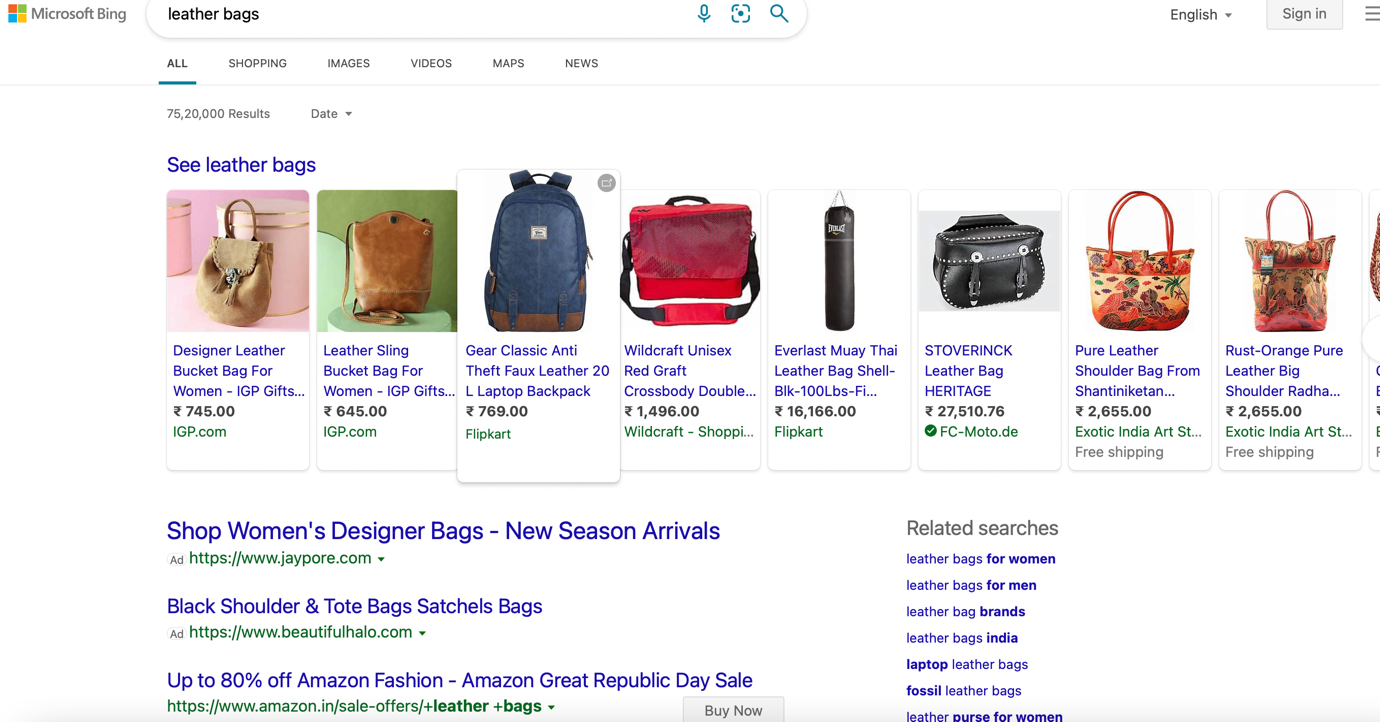
Bing Ads, now known as Microsoft Advertising, offers a range of advertising options to help businesses reach their target audience across the Bing search engine and its network of partner sites. Here are the types of Bing Ads:
Search Ads
Text-based ads that appear alongside Bing search results when users search for keywords related to your business. Similar to Google Ads, Bing search ads include a headline, ad copy, and a display URL. They are triggered by specific search queries entered by users.
Shopping Ads
Product-based ads that appear on the Bing search results page when users search for specific products. Bing Shopping ads feature product images, prices, and store names, providing users with relevant information to make informed purchasing decisions.
Microsoft Audience Ads
Formerly known as Bing Native Ads, Microsoft Audience Ads appear on Microsoft-owned properties such as MSN, Outlook, and Microsoft Edge. These native ads blend seamlessly with the content on the page, providing advertisers with an opportunity to reach a broader audience beyond Bing search.
App Install Ads
Ads that promote mobile apps across the Bing network, including search and partner sites. App install ads encourage users to download and install mobile applications directly from the app store, driving app installs and user engagement.
Dynamic Search Ads
Dynamic Search Ads (DSAs) automatically generate ad headlines and landing pages based on the content of your website. DSAs are particularly useful for advertisers with large inventories or frequently updated websites, as they dynamically target relevant search queries without the need for keyword management.
Remarketing
Bing Ads offers remarketing capabilities that allow advertisers to target users who have previously visited their website but did not convert. Remarketing ads can help re-engage potential customers and drive conversions by displaying tailored ads to users as they browse the web.
Local Ads
Similar to Google’s local ads, Bing Ads offers location-based targeting options to help advertisers reach users in specific geographic locations. Local ads appear in Bing search results and on Bing Maps, providing information such as addresses, phone numbers, and directions to nearby businesses.
LinkedIn Profile Targeting
Microsoft Advertising offers LinkedIn Profile Targeting, allowing advertisers to target users based on their LinkedIn profile information, such as job title, company, industry, and more. This feature leverages Microsoft’s integration with LinkedIn to reach professionals with relevant ads.
By leveraging these different types of Bing Ads, advertisers can effectively target their desired audience, promote their products or services, and achieve their advertising objectives across the Bing network and its partner sites.
Why Google Ads Is Better Than Bing Ads?
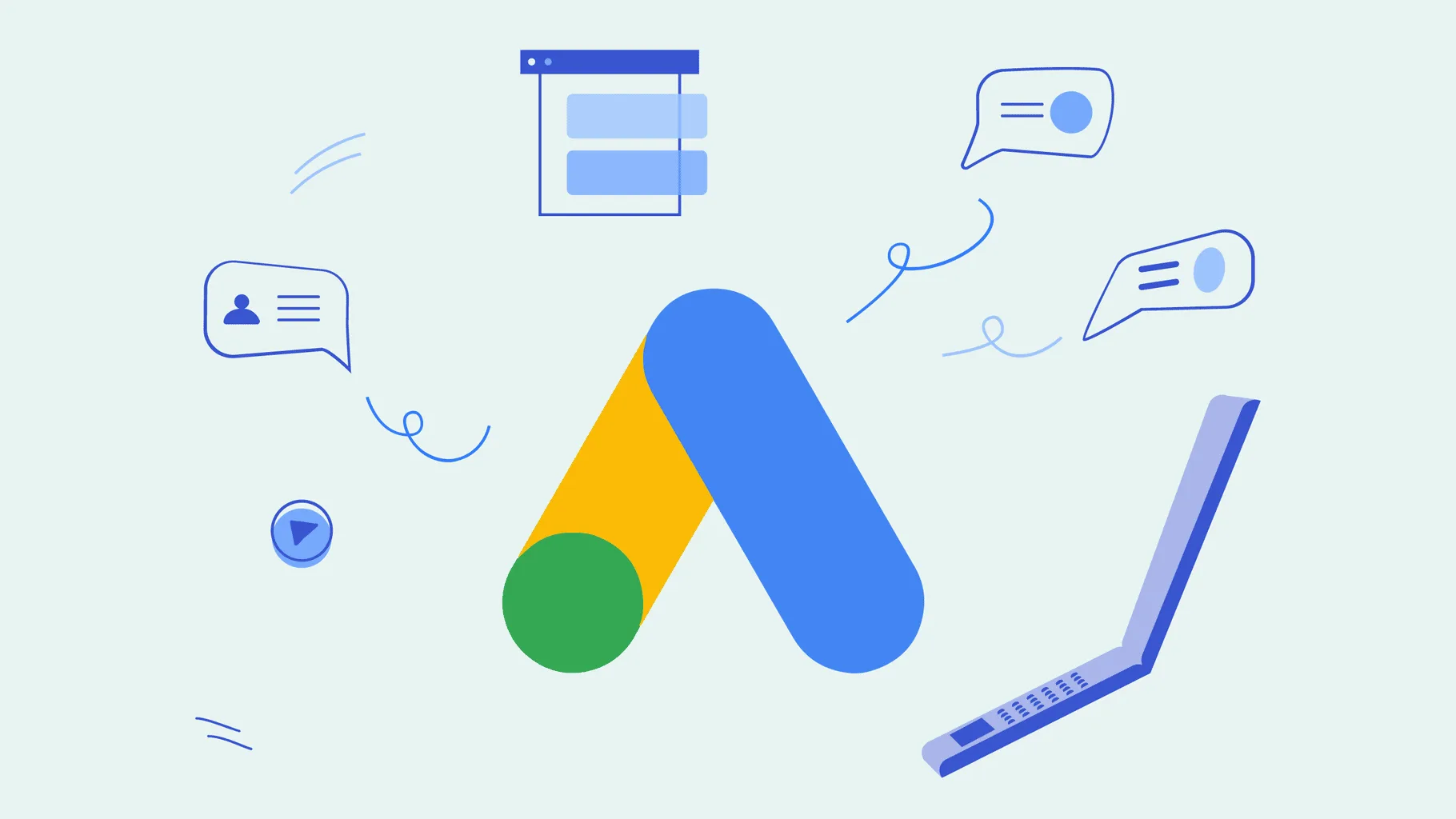
While both Google Ads and Bing Ads have their strengths, many advertisers consider Google Ads to be superior for several reasons:
Audience Reach
Google processes over 3.5 billion searches per day, giving advertisers access to an unparalleled audience base. With such a vast reach, Google Ads offers businesses the opportunity to connect with potential customers at every stage of the buying journey.
Market Dominance
Google dominates the search engine market with over 90% global market share, making it the go-to platform for online search. As a result, businesses can benefit from increased visibility and exposure by advertising on Google.
Advanced Targeting Options
Google Ads provides robust targeting options based on demographics, interests, behaviors, and more. Advertisers can fine-tune their campaigns to reach specific audience segments with precision, increasing the relevance and effectiveness of their ads.
Comprehensive Ad Formats
Google Ads offers a wide range of ad formats, including search ads, display ads, video ads, shopping ads, and more. This variety allows advertisers to choose the most suitable ad format for their goals and target audience, maximizing their campaign performance.
Integration with Google Services
Google Ads seamlessly integrates with other Google services such as Google Analytics, Google Merchant Center, and YouTube, providing advertisers with valuable insights and additional advertising opportunities. This integration streamlines campaign management and optimization, enhancing overall efficiency and effectiveness.
Advanced Tools and Features
Google Ads offers a plethora of advanced tools and features, including automated bidding strategies, audience targeting options, ad extensions, and performance reports. These tools empower advertisers to optimize their campaigns for better results and ROI.
Continuous Innovation
Google is known for its commitment to innovation and regularly introduces new features and updates to improve the advertising experience for both advertisers and users. This continuous innovation ensures that Google Ads remains at the forefront of digital advertising technology, providing advertisers with cutting-edge tools and capabilities.
While Bing Ads certainly has its merits, particularly for specific demographics or niche markets, many advertisers prefer Google Ads for its unparalleled reach, advanced targeting options, comprehensive ad formats, integration with Google services, advanced tools and features, and continuous innovation.
Ultimately, the decision between Google Ads and Bing Ads depends on factors such as target audience, advertising goals, and budget constraints, but for many businesses, Google Ads offers the most effective platform for reaching and engaging with potential customers online.
Why Bing Ads Is Better Than Google Ads?
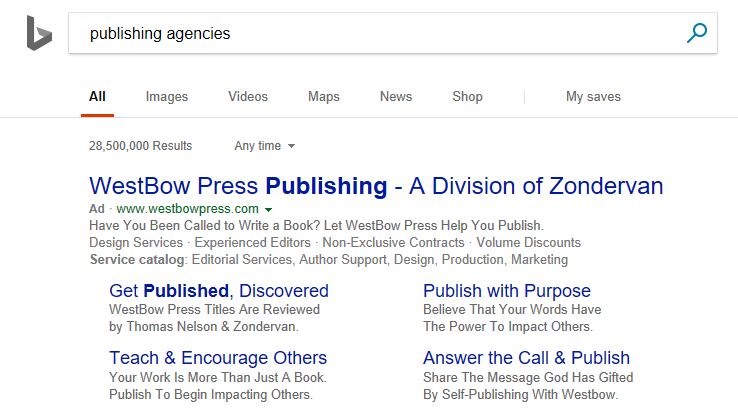
While Google Ads is the dominant player in the online advertising space, Bing Ads offers unique advantages that may make it a better choice for certain advertisers:
Lower Cost Per Click (CPC)
Bing Ads often have lower CPC compared to Google Ads, particularly in industries with less competition. This can make advertising on Bing more cost-effective, especially for businesses with limited budgets or those operating in niche markets.
Less Competition
With Google’s overwhelming market dominance, competition for ad placements can be fierce, driving up CPC and making it challenging for smaller businesses to compete. Bing Ads, on the other hand, have less competition, allowing advertisers to achieve better ad placement and visibility at a lower cost.
Bing’s Audience
While Google has a larger overall audience, Bing’s user base tends to skew older and more affluent. This demographic profile may be more aligned with certain businesses’ target audiences, particularly those targeting older demographics or specific niche markets.
Integration with Microsoft Products
Bing Ads seamlessly integrates with other Microsoft products and services, including Microsoft Advertising Intelligence and LinkedIn. This integration can provide advertisers with valuable insights and additional advertising opportunities, particularly for B2B marketing and targeting professional audiences.
Bing’s Syndicated Partnerships
Bing has syndicated partnerships with various search engines and websites, including Yahoo and AOL. This expands the reach of Bing Ads beyond Bing’s own search results to additional platforms, increasing the exposure and potential reach of advertisers’ campaigns.
Ease of Use for Beginners
Some advertisers find Bing Ads easier to use, particularly for beginners or those transitioning from traditional advertising channels. Bing’s interface may be less complex and more intuitive for newcomers to navigate, making it easier to create and manage advertising campaigns.
Stronger Click-Through Rates (CTR) in Some Industries
While Google generally boasts higher overall traffic volume, Bing Ads may deliver stronger click-through rates (CTR) in certain industries or for specific types of products/services. This can result in a higher ROI for advertisers targeting these audiences.
Customer Support
Bing Ads often receives praise for its customer support, with many advertisers reporting positive experiences and responsive assistance from Bing’s support team. This level of support can be valuable for advertisers seeking guidance or troubleshooting assistance with their campaigns.
While Bing Ads may not offer the same scale and reach as Google Ads, its lower CPC, less competition, specific audience demographics, integration with Microsoft products, syndicated partnerships, ease of use, potentially higher CTR in certain industries, and reliable customer support make it a compelling choice for advertisers looking to diversify their online advertising efforts or target specific niche markets.
Ultimately, the decision between Bing Ads and Google Ads depends on factors such as target audience, advertising goals, budget constraints, and the competitive landscape within your industry.
Which Businesses Are Suited To Which Platform Google Ads vs Bing Ads?
Determining whether Google Ads or Bing Ads is better suited for your business depends on various factors, including your target audience, advertising goals, budget, and industry. Here’s a breakdown of which businesses are suited to each platform
Google Ads
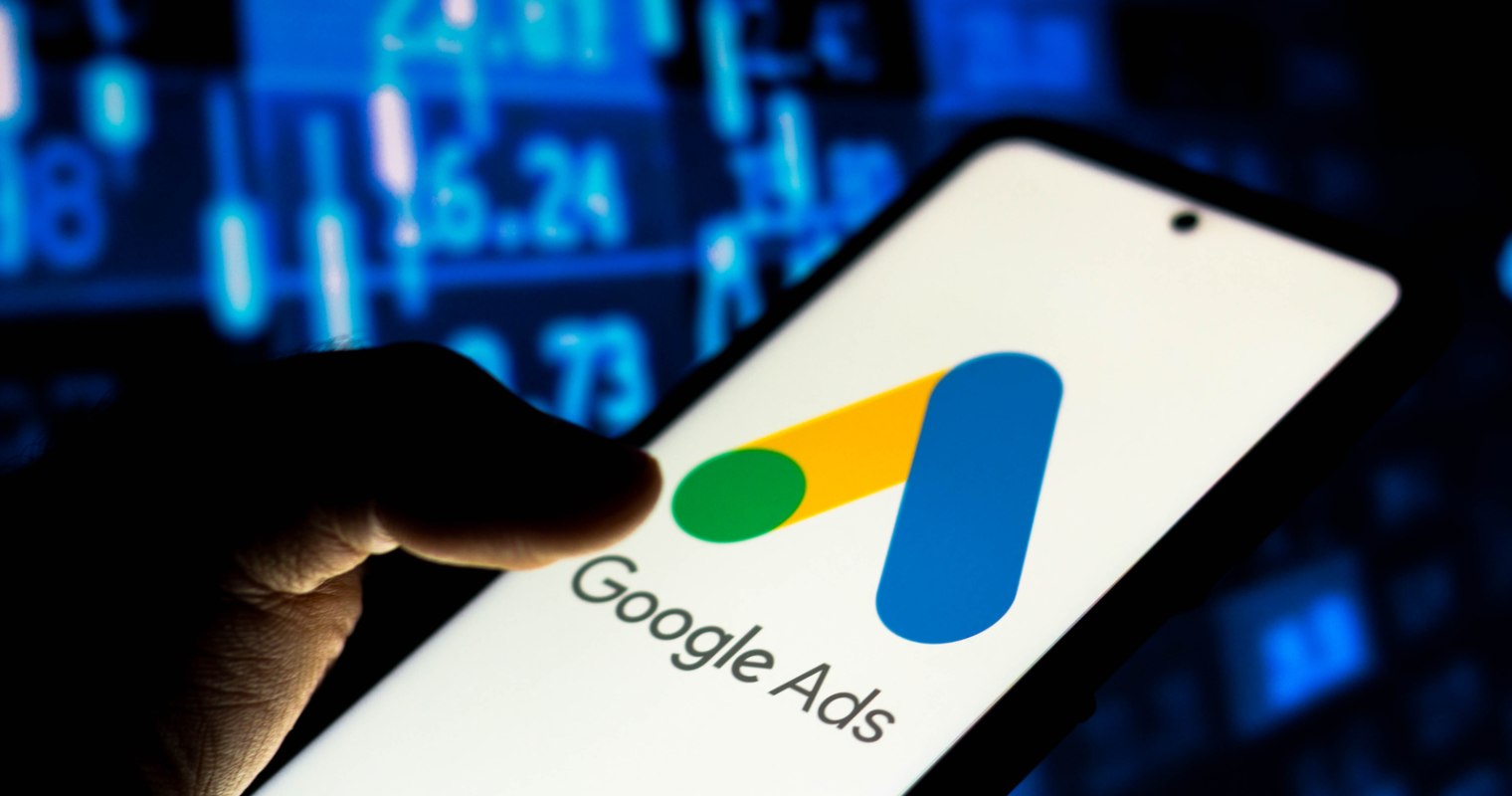
Businesses with Broad Audience Appeal
If your products or services have broad appeal and target a wide range of consumers, Google Ads is an excellent choice due to its massive reach and diverse user base.
E-commerce and Retailers
Google Shopping Ads are particularly effective for e-commerce businesses and retailers looking to promote their products to users actively searching for specific items online.
Local Businesses with Multiple Locations
Google Ads’ local ad features, including location extensions and Google Maps integration, make it well-suited for local businesses with multiple physical locations, such as restaurants, stores, and service providers.
Tech Companies and Startups
Given Google’s dominance in the tech and innovation space, tech companies, startups, and software-as-a-service (SaaS) businesses can benefit from targeting tech-savvy audiences on Google’s platforms.
Businesses Targeting Younger Audiences
Google’s user base skews younger, making it ideal for businesses targeting millennials and Generation Z audiences, particularly for products or services in industries such as technology, fashion, and entertainment.
Bing Ads

Businesses Targeting Older Demographics
Bing’s user base tends to skew older and more affluent, making it a better choice for businesses targeting baby boomers and older demographics, including healthcare, finance, and retirement services.
Niche Markets with Less Competition
Bing Ads’ lower CPC and less competitive landscape make it well-suited for businesses operating in niche markets or industries with less competition, allowing for more cost-effective advertising campaigns.
B2B and Professional Services
Bing’s integration with LinkedIn and its audience demographics make it a valuable platform for B2B marketers and businesses targeting professional audiences, including business services, consulting, and software companies.
Local Services and Contractors
Bing Ads’ local ad features, including location targeting and Bing Maps integration, make it a good choice for local services and contractors, such as plumbers, electricians, and home repair professionals.
Financial Services and Insurance
Bing’s user base includes a higher proportion of users interested in financial planning, investments, and insurance, making it an attractive platform for businesses in these industries.
Ultimately, the best platform for your business depends on your specific goals, target audience, and budget. Many businesses find success by diversifying their advertising efforts across both Google Ads and Bing Ads, leveraging the unique strengths and audiences of each platform to maximize their reach and ROI.
Conclusion On Google Ads vs Bing Ads - Which Is Better For Your Business In 2024?
In 2024, determining whether Google Ads or Bing Ads is better for your business hinges on several factors. Google Ads boasts unparalleled reach, advanced targeting options, comprehensive ad formats, and seamless integration with Google services, making it ideal for businesses with broad audience appeal and diverse marketing objectives.
Conversely, Bing Ads offers advantages such as lower CPC, less competition, specific audience demographics, and integration with Microsoft products, catering well to businesses targeting older demographics, niche markets, or seeking cost-effective advertising solutions.
Ultimately, the choice between Google Ads and Bing Ads depends on your target audience, advertising goals, and budget constraints, with many businesses finding success by leveraging the unique strengths of both platforms to maximize reach and return on investment.

